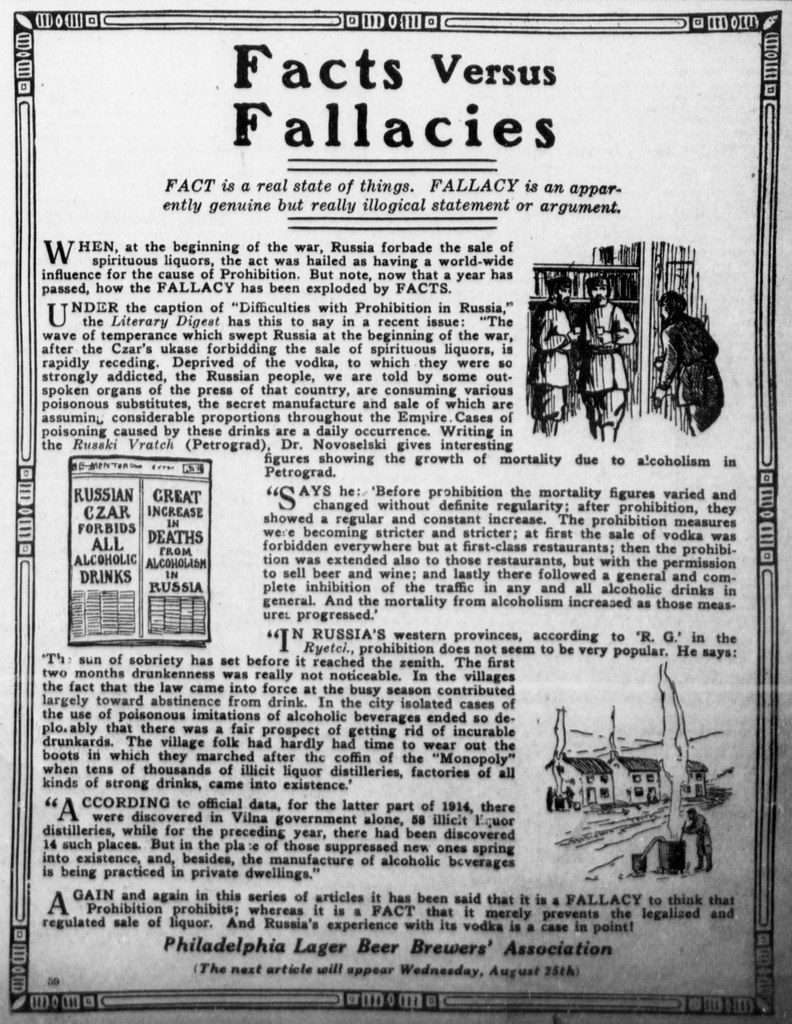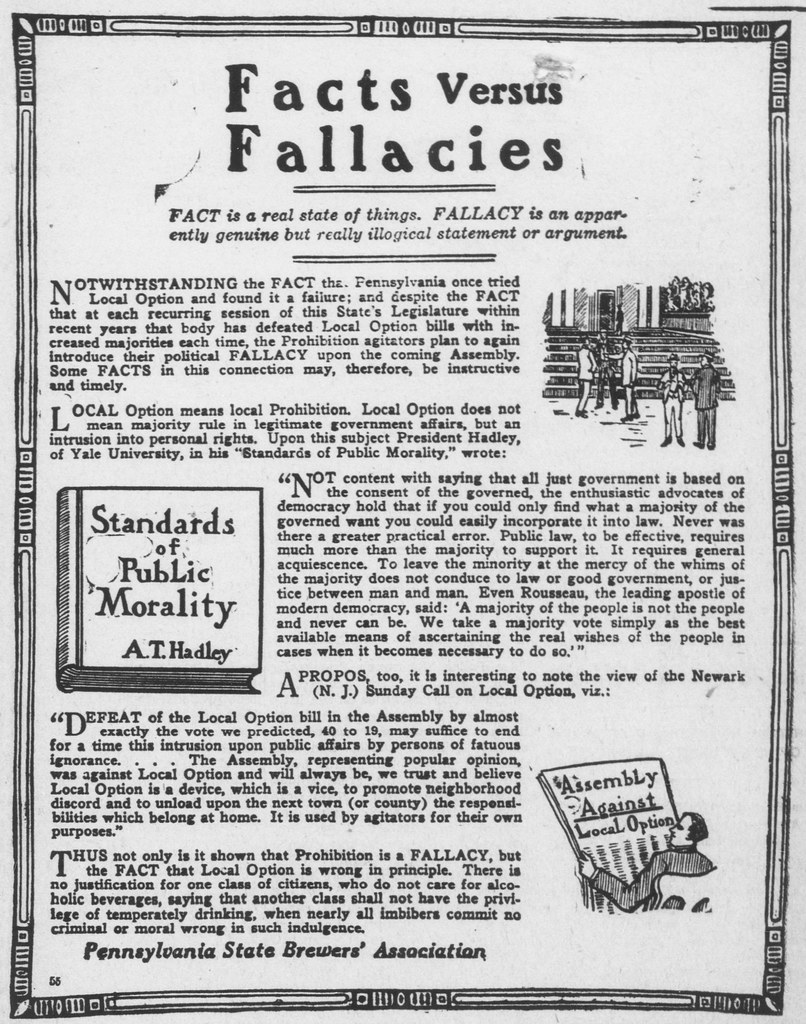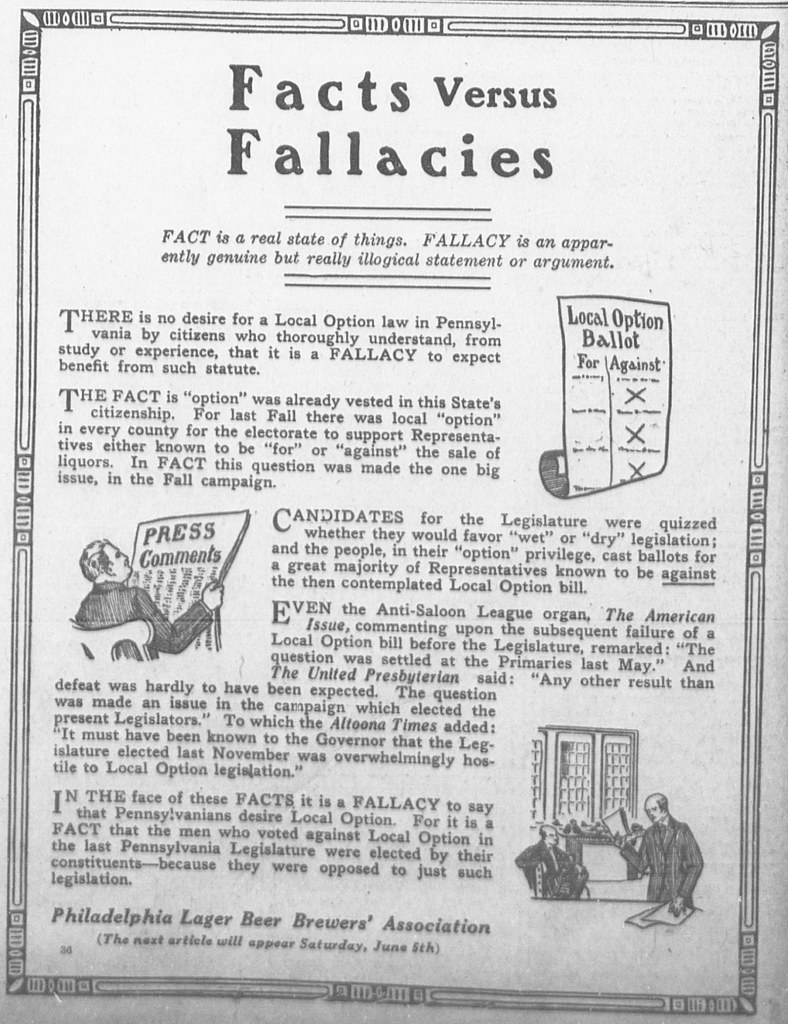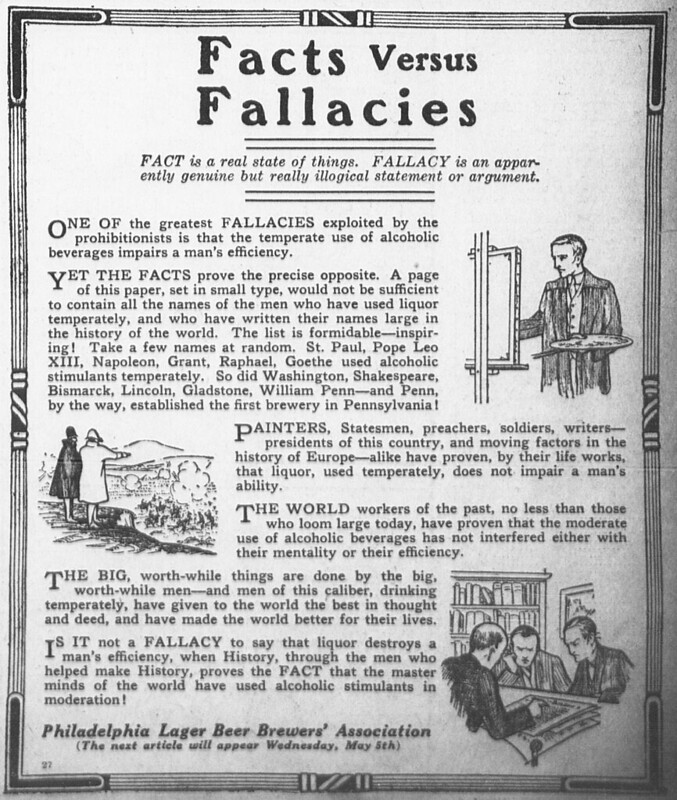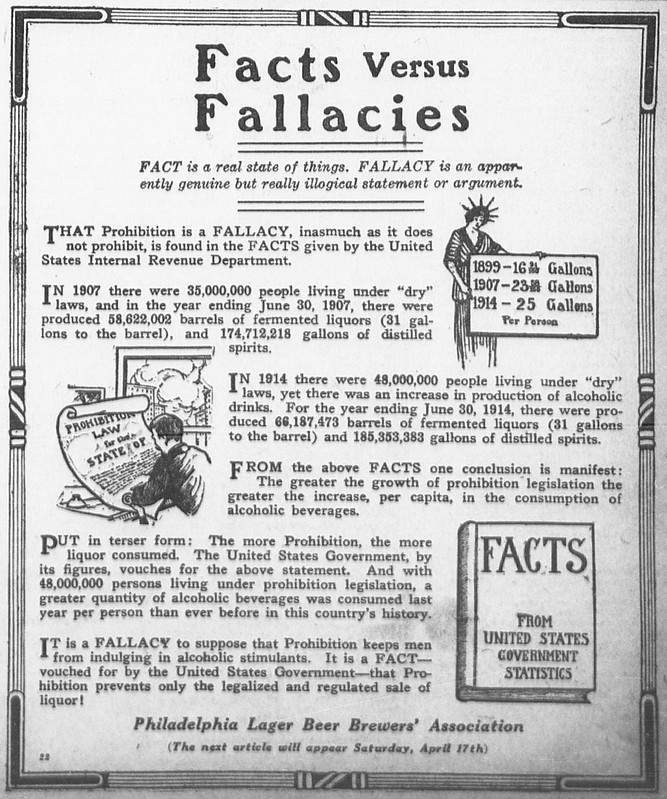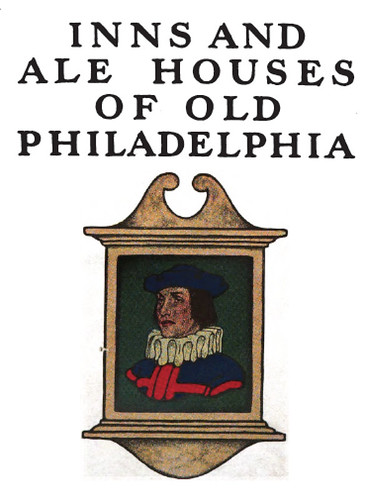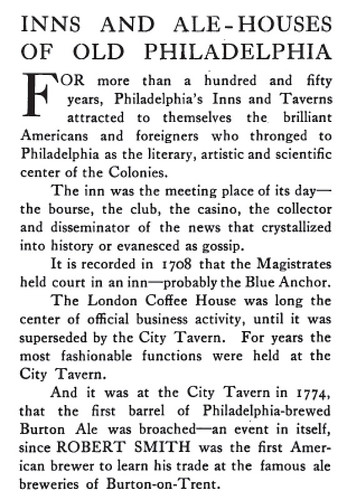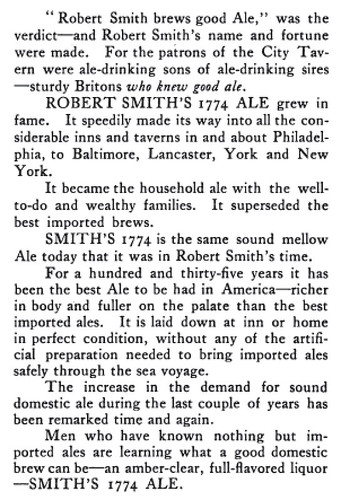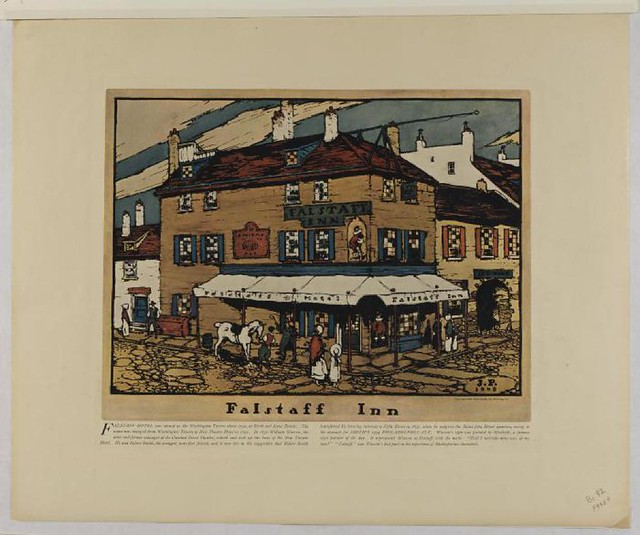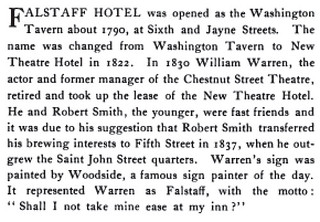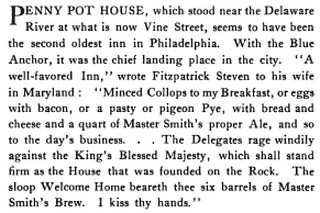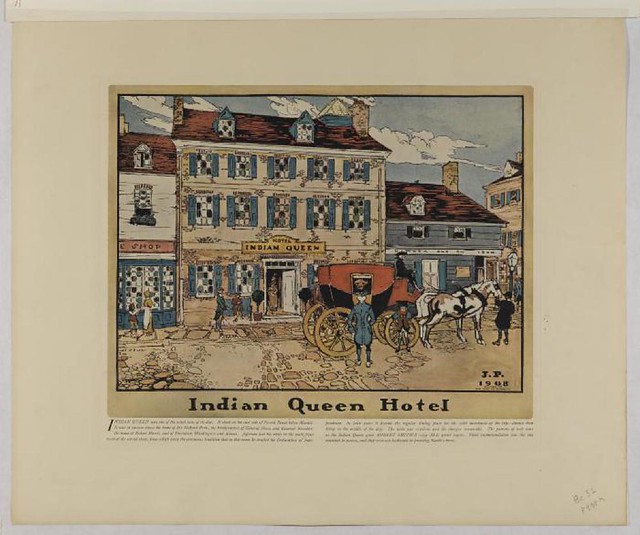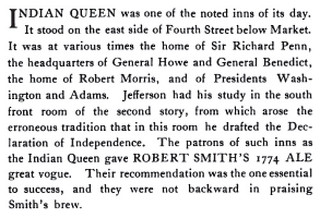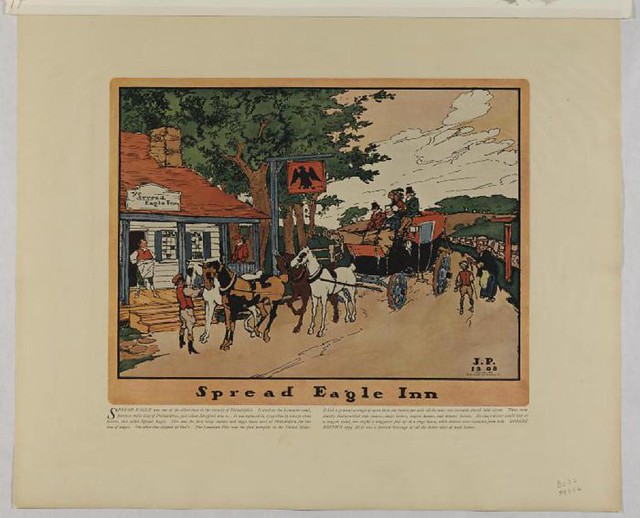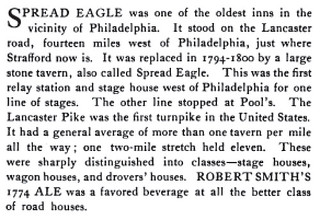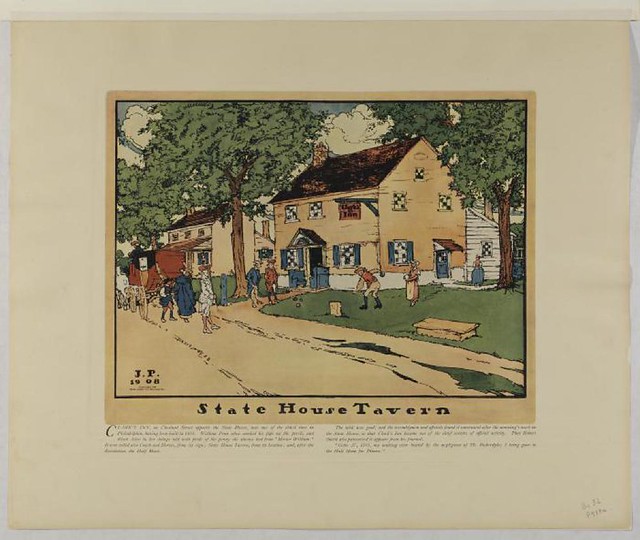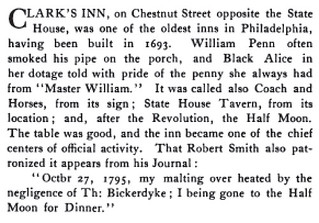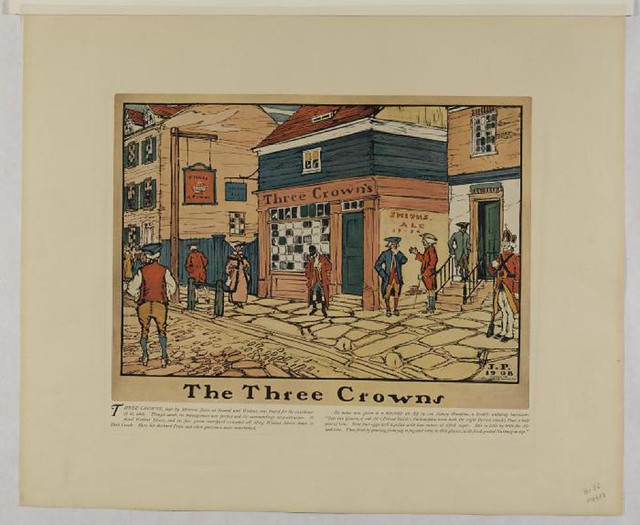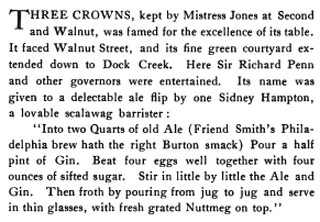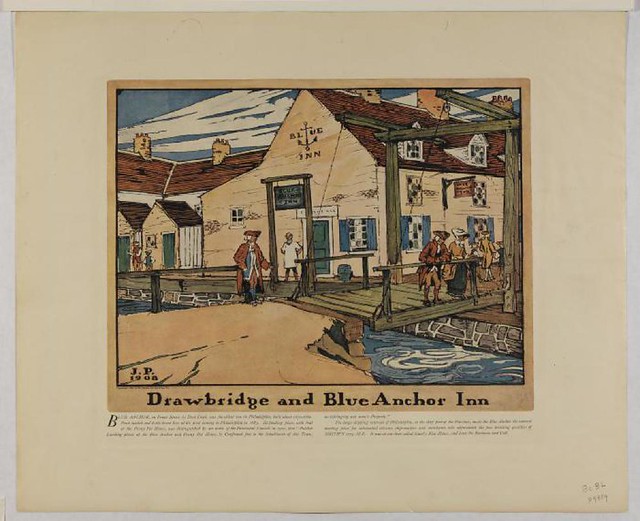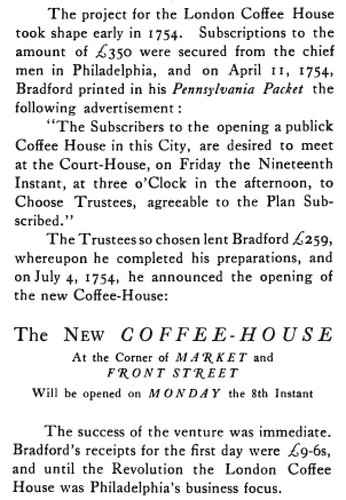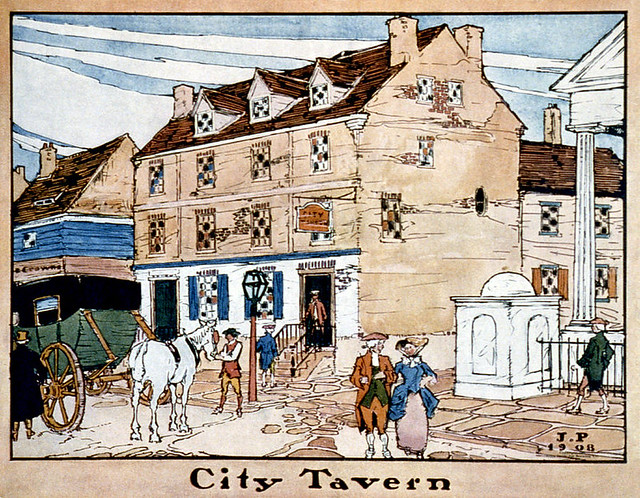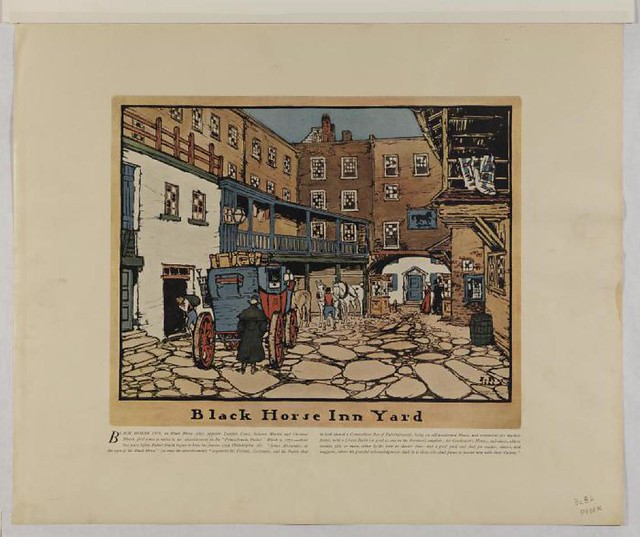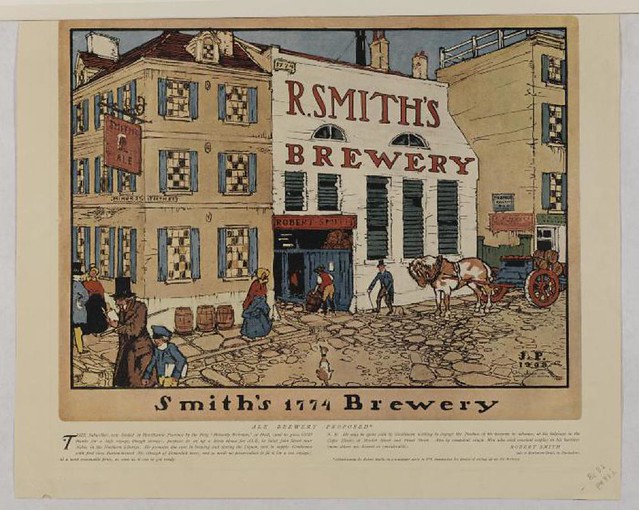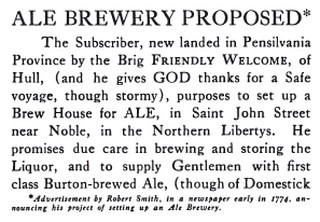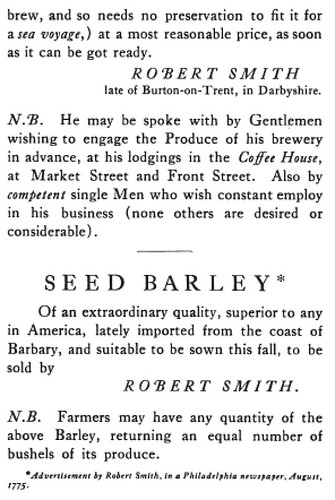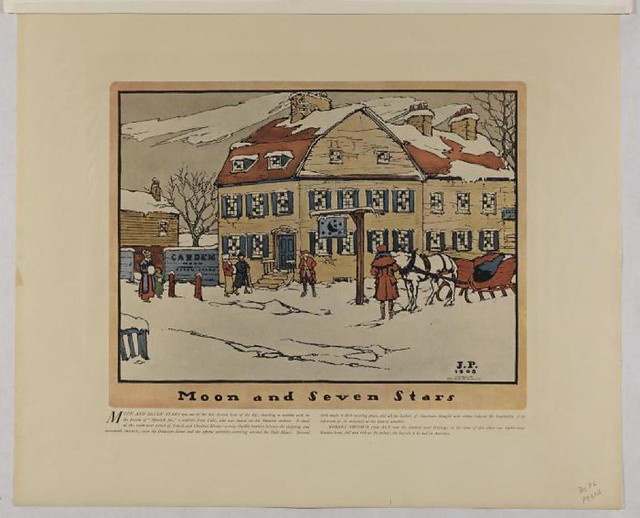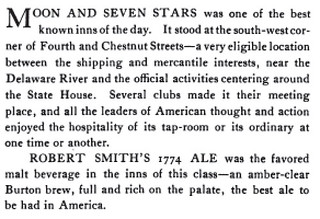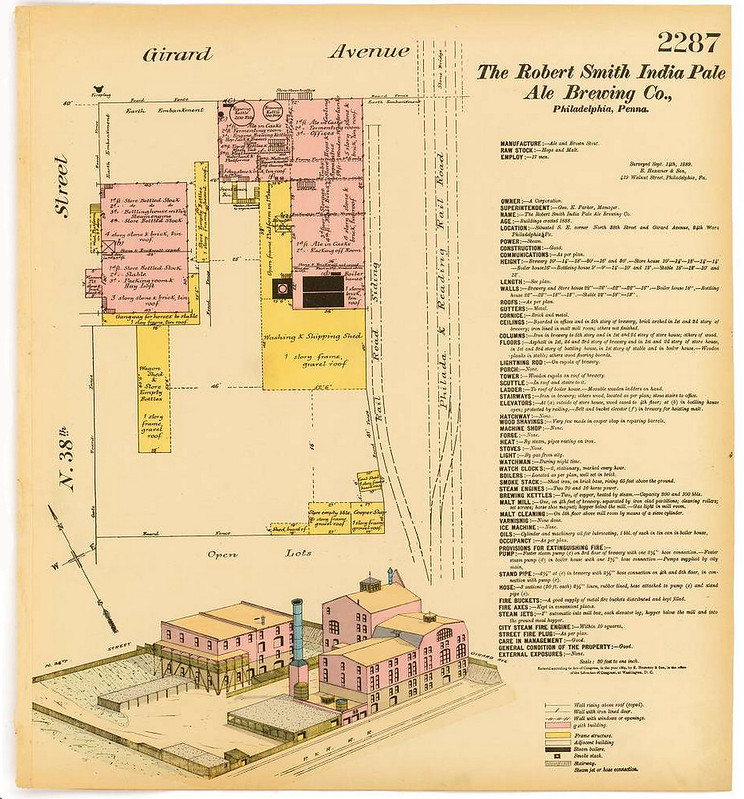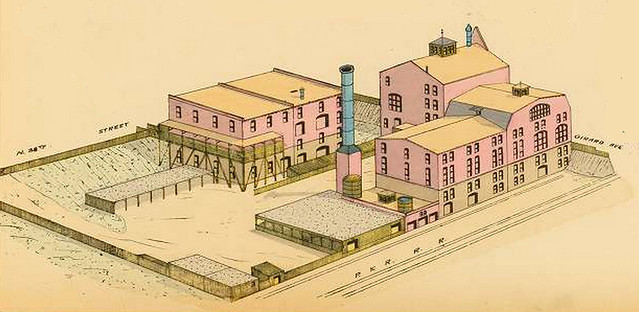
Tuesday’s ad is another one for the Pennsylvania State Brewers Association, from 1915, No. 59 in series they did from 1915-17 called “Facts Versus Fallacies.” I have no idea how many were done but some of the them are numbered into low triple digits, suggesting there were a lot of them, all in an effort to stop Prohibition from happening and win over support for beer. This ad, marked “59,” is another interesting one that reports on a Russian prohibition imposed in 1914 because of the First World War. I’ve read mixed things about its success, and it was repealed in 1925. But according to the ad, people were dying from poisoning from homemade vodka alternatives and mortality rates for alcoholism were rising sharply. So, the argument went, we already had evidence that prohibition didn’t really work, and caused at least as many problems as it purported to solve.
